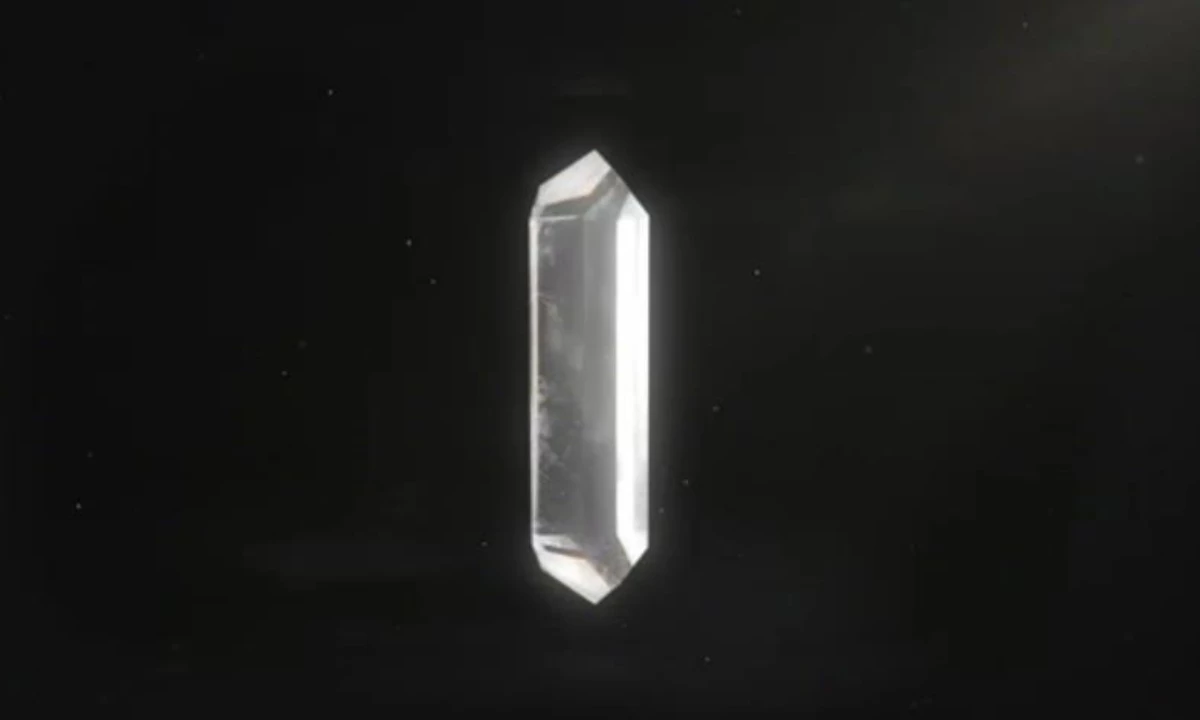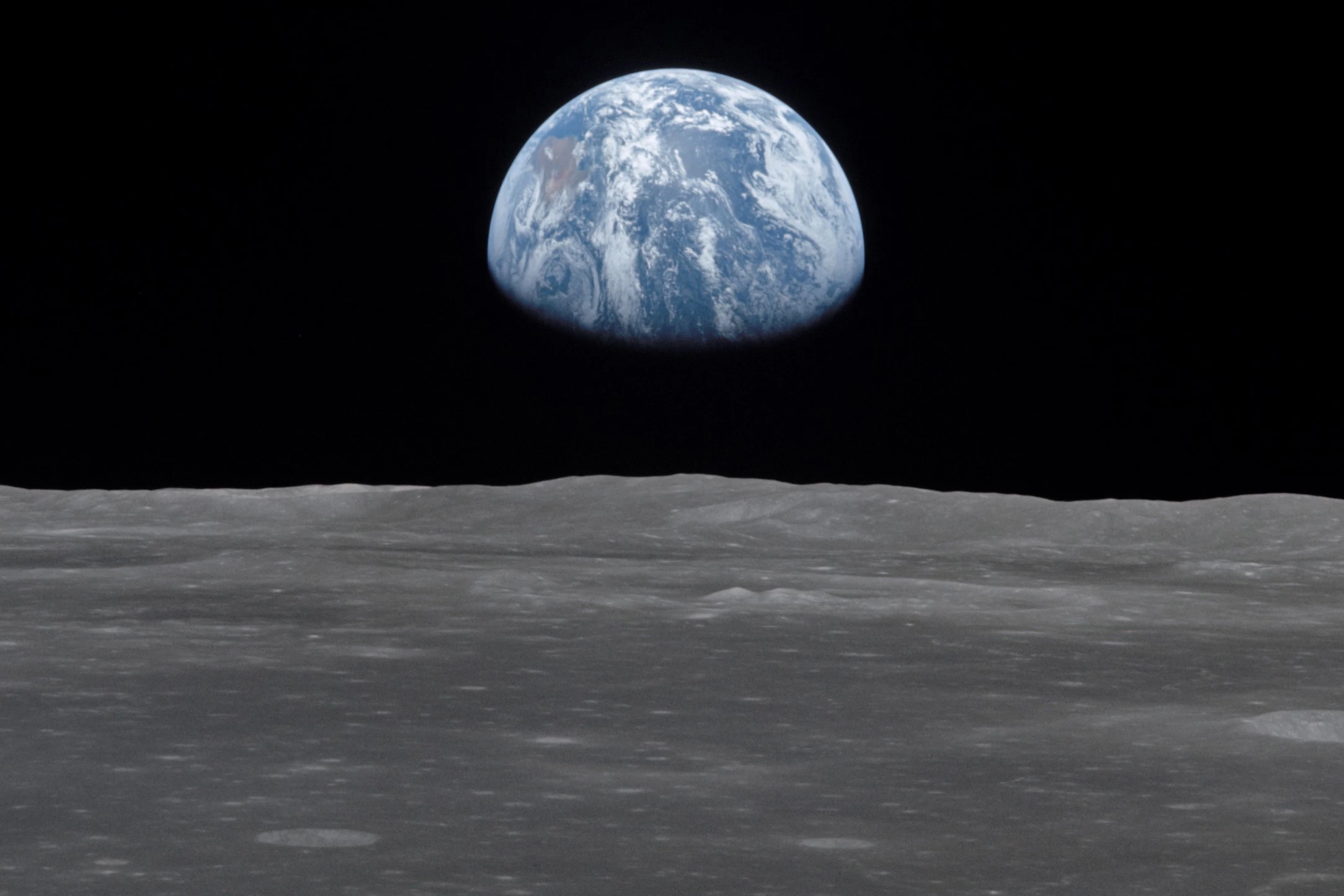It seems China's Chang'E-5 robotic Moon mission has discovered more than water on the lunar surface. Scientists have confirmed the discovery of a new mineral, a transparent crystal named Changesite-(Y), as well as a promising potential fusion fuel.
In a joint announcement from the China National Space Administration and the China Atomic Energy authority last week, China celebrated its first new mineral discovered on the Moon – and the sixth ever by mankind. According to Chinese news agency Xinhua, "Changesite-(Y) is a kind of colorless transparent columnar crystal. It was discovered from an analysis of lunar basalt particles by a research team from the Beijing Research Institute of Uranium Geology, a subsidiary of the China National Nuclear Corporation."
The sample analyzed – and confirmed by the International Mineralogical Association as a new mineral – was found among just 1,731 g (61 oz) of lunar samples brought back by the Chang'E 5 mission in 2020 – the first Moon rocks to be brought back to Earth since 1976. It's a single crystal particle with a radius of about 10 microns.

This haul has also yielded the first numbers around the concentration of helium-3 in Moon dust, and researchers have managed to deduce "extraction parameters" required to harvest this isotope from returned samples.
Helium-3 is thought of as a promising potential fuel for nuclear fusion. With two protons and just one neutron, it's unique as the only known stable isotope of any element that's got more protons than neutrons. Theoretically, a deuterium/helium-3 fusion reaction would liberate 164.3 megawatt-hours of energy per gram of helium-3 – and crucially, neither the helium-3 or its reaction products are radioactive, so they wouldn't turn reactor components into radioactive nuclear waste disposal headaches like a deuterium-tritium reactor will.
There are downsides – a helium-3 fusion reactor will need to operate at much higher temperatures than a tritium reactor, for example, and helium-3 is extremely rare and difficult to isolate on Earth. Indeed, the main way it's produced today is by waiting for tritium in nuclear warheads and related stockpiles to decay, then drawing it off in tiny amounts, totaling about 15 kg (33 lb) per year. It's naturally present in the Earth's atmosphere, but at tiny 7.2 parts per trillion concentrations. It's also present in primordial gases in the Earth's mantle, but generally inaccessible.

But it's certainly of great value, since the US has started using it in neutron detectors scanning for nuclear materials at US border crossings, vastly increasing demand and driving the price up accordingly. It's hit marks as high as US$17,540 per gram in recent times, with demand expected to continue rising – which is why many analysts believe it's an excellent candidate for lunar mining.
The Moon's surface is believed to contain as much as 1.1 million metric tons of helium-3. According to the International Policy Digest, that represents around $1.5 quadrillion worth of resources, and an opportunity summarized by Ouyang Ziyuan, head of the Chinese Lunar Exploration Program, as a transformational fusion energy opportunity: "each year, three space shuttle missions could bring enough fuel for all human beings across the world."
Of course, the costs involved in building a mining operation on the Moon are, well, astronomical. It wouldn't be a small operation, either; the highest estimated concentrations of helium-3 in lunar soil are around 50 parts per billion (China has not released the concentrations it discovered in its samples), so you'd likely need to process 150 tonnes of regolith to harvest a single gram of this valuable isotope. And then you'd need to get it back to Earth; itself no simple or cheap undertaking.

What's more, while there's a ton of energy and activity in the fusion field of late, it's far from guaranteed that it'll be up and running as an energy source any time soon. And if fusion researchers manage to create and sustain the "much higher" ~600 million-degree temperatures needed for helium-3 fusion, well, maybe they'll achieve the billion-degree temperatures needed for hydrogen-boron fusion, which is equally free from radioactive fuels and by-products, but uses incredibly cheap and abundant fuel – and which fusion company TAE says it expects will be up and running commercially by the early to mid-2030s. Still, lunar helium mining is most certainly an idea China is planning to explore.
"Analyzing the composition of lunar soil and lunar rock samples and studying nuclear science to assess potential nuclear energy resources on the Moon is one of the strategic goals of China’s Lunar Exploration Project," reads a China National Nuclear Corporation press release.
After the Changesite-(Y) and helium-3 announcements, the China National Space Administration announced full state approval for the next three phase-4 lunar missions. Chang'E 6, 7 and 8, expected to begin launching as early as 2024, will explore the lunar south pole and begin building a basic structure for the International Lunar Research Station, according to Shine.
Sources: China National Nuclear Corporation, China News, Global Times, Xinhua





